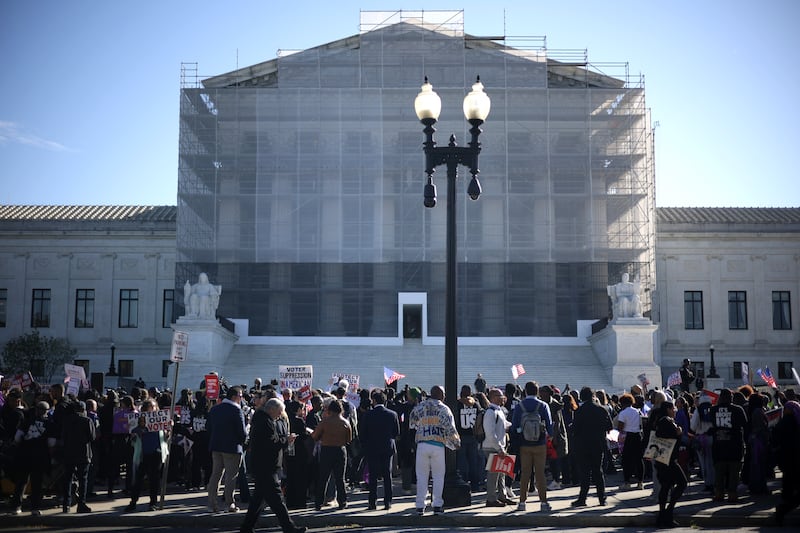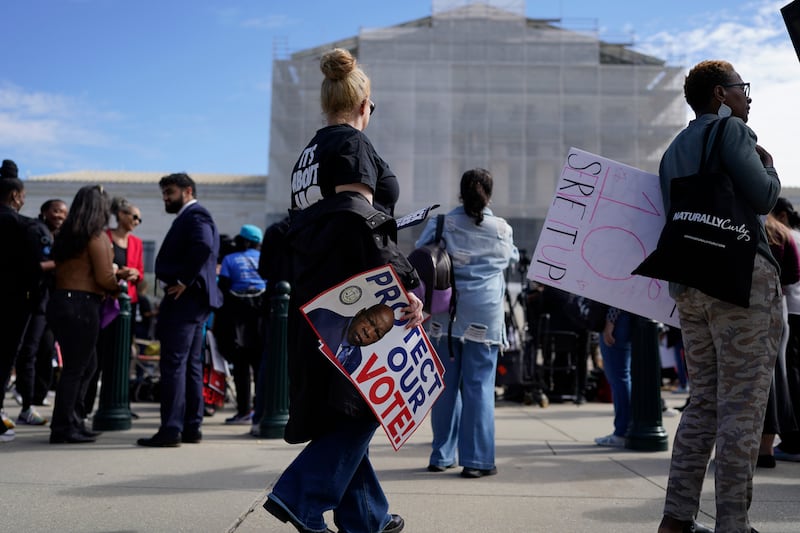The conservative-leaning Supreme Court signaled that it could limit the use of race as a factor in drawing congressional districts, a move that could allow red states to redraw districts, potentially giving Republicans control of Congress for decades.
The court heard arguments on Wednesday in the case Louisiana v. Callais, which examined Section 2 of the landmark 1965 civil rights legislation, the Voting Rights Act, a provision that the court has been slowly chipping away at for more than a decade.
President Donald Trump has been pressuring red states to redraw congressional maps to give Republicans more optimal positioning ahead of the 2026 midterms, but the court’s decision in this case could have much further reaching implications.
Section 2 has been interpreted to require the creation of majority-minority districts. Should the conservative court strike it down, it paves the way for Republicans to potentially do away with more than a dozen districts held by Democrats across the South, where gerrymandering efforts had previously been somewhat restricted.

In a House where Republicans currently hold 219 seats while Democrats hold 213, even the slight shifts have a significant impact on who holds control of the chamber. It flipped from blue to red as recently as 2022.
A change resulting from the court’s ruling could have long-lasting effects in states across the country. The end of Section 2 could result in Republicans picking up 12 seats, according to an analysis from The New York Times.
While the court heard the case on Wednesday, it typically does not issue a ruling until the end of the term, meaning late June or early July.
That makes it hard to determine when the results of the ruling would hit should states get a green light to redistrict without race playing the same role it has had in the past.
The midterms take place next November, with a series of filing deadlines and primaries taking place throughout the first part of the year before the court typically hands down its decision.
Both Democrats and Republicans have accused members of the other party of attempting to hold onto power in this fight.
The case, brought by a group of 12 self-described “non-African-American” voters, examines whether Louisiana lawmakers violated the 14th and 15th Amendments of the Constitution when they redrew the state’s maps back in 2024 to create a second majority-Black district.
Just last year, the court declined to issue a ruling when hearing whether to leave the state’s 2024 map in place. It instead set it for rearguments in the next term, which started last week.

On Wednesday, some conservative justices on the court focused on whether there should be a time limit for allowing race to be used in the drawing of congressional maps, as the legislation protecting majority-minority districts stems from the civil rights era and reverses longtime efforts to suppress Black voters.
Justice Brett Kavanaugh said recent rulings found “race-based remedies are permissible” but that they should “not be indefinite” and should have an “end point.” Chief Justice John Roberts also weighed in by questioning what size the role of race should play.
A lawyer representing Black voters argued that the only reason there is the current diversity in representation in the South is because of litigation under the Voting Rights Act.
Louisiana redrew its maps in 2024 to create two majority-minority districts after a group of Black voters challenged the congressional district lines, which were drawn by Republican state lawmakers in 2022 following the 2020 census. That map included five majority-White districts and one majority-Black district. However, the census showed a third of the state’s population is Black.
A federal judge at the time agreed the original maps violated the Voting Rights Act and diluted the voting power of Black voters, so the state had to go back and redraw its districts resulting in the current ones being challenged in court.
The post Supreme Court Signals It Could Cement GOP House for Decades appeared first on The Daily Beast.




